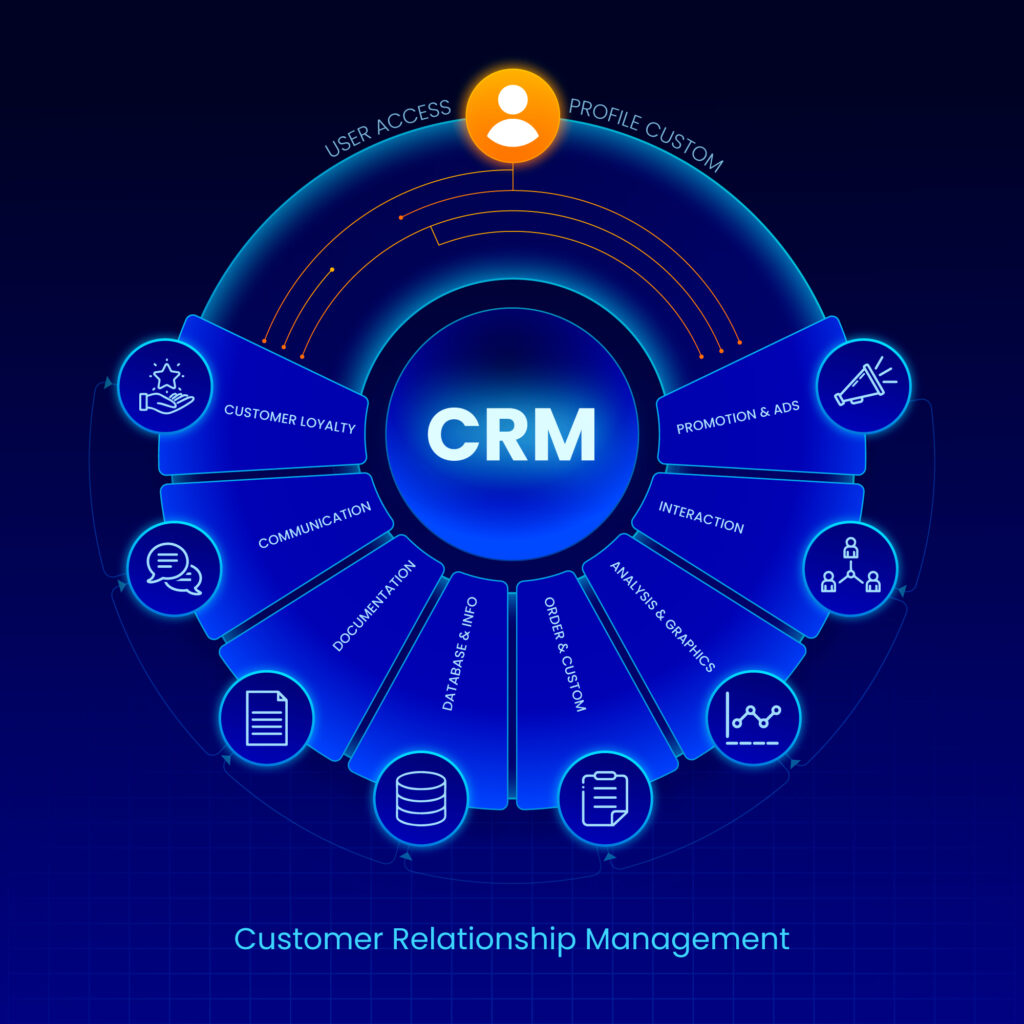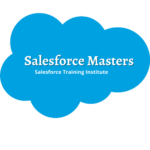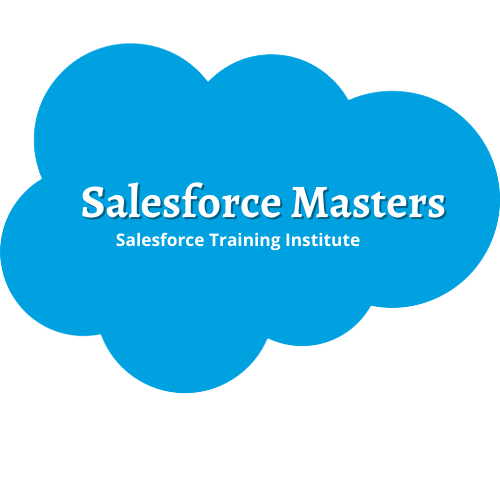How To Learn CRM Software:Beginner's Guide
Salesforce CRM (Customer Relationship Management) is a cloud-based software platform that helps businesses manage and automate many elements of their customer interactions and relationships. It serves as a centralized portal for businesses to store and access client data, track sales activities, manage marketing campaigns, and offer customer assistance.Salesforce CRM aims to enhance overall customer satisfaction and improve business efficiency by offering a suite of tools and features for sales, marketing, and customer service teams.

How To Learn CRM Software
Key features of Salesforce CRM include
Contact Management: Store and organize customer information in a centralized database, making it easy for teams to access and update customer records.
Opportunity Management: Track sales opportunities through the sales pipeline, from leads to closed deals, and analyze sales performance.
Lead Management: Capture, qualify, and nurture leads through the sales process to convert them into potential customers.
Sales Automation: Improve productivity by automating routine sales processes including sending emails, updating records, and preparing reports.
Marketing Automation: Plan, execute, and analyze marketing strategies to produce and nurture leads, such as email marketing, social media, and advertising.
Customer Support: Provide a unified platform for managing customer support cases, tracking issues, and resolving inquiries efficiently.
Analytics and Reporting: Gain insights into sales and marketing performance through customizable reports and dashboards, helping organizations make data-driven decisions.
Integration: Connect Salesforce CRM with other business applications and systems to ensure seamless data flow across the organization.
Salesforce CRM Advantages & Benefits
Centralized Customer Data: Salesforce offers a unified platform for storing and managing client information, ensuring that all teams have access to the most current and correct data. This centralization helps in building a comprehensive view of each customer, enhancing communication and collaboration across departments.
Improved Customer Relationships: Organizations can better understand their customers’ wants and preferences by taking a 360-degree view of their interactions. This insight enables personalized and targeted communication, fostering stronger and more meaningful relationships with customers.
Sales Efficiency: Salesforce automates many sales processes, reducing manual tasks and allowing sales teams to focus more on selling. Features such as lead management, opportunity tracking, and workflow automation contribute to increased efficiency and higher conversion rates.
Marketing Effectiveness: The platform’s marketing automation capabilities help firms plan, execute, and analyze marketing campaigns more effectively. Marketers can create targeted campaigns, track performance, and adjust strategies based on real-time data.
Customer Support Excellence: Salesforce’s customer care and support tools help businesses manage and address customer inquiries more efficiently. Case management, knowledge base, and self-service options contribute to a better customer support experience.
Enhanced Collaboration: Salesforce encourages team collaboration by offering a common platform for communication and information sharing. This helps break down silos between sales, marketing, and customer service, fostering a more collaborative and aligned organization.
Scalability: Salesforce is a scalable solution that adapts to the needs of the organization. Whether an organization is small or large, the platform can adapt to changing needs and handle rising data quantities and user numbers.
Real-time Analytics: The platform offers robust analytics and reporting tools that allow organizations to gain insights into their performance. Customizable dashboards and reports offer data-driven decision-making and the capacity to rapidly modify plans based on real-time data.
Flexibility and Customization: Salesforce is highly customizable, allowing organizations to tailor the platform to their specific business processes. Custom objects, fields, and workflows enable a tailored CRM solution that aligns with the unique requirements of the organization.
Mobile Accessibility:Salesforce offers mobile applications that enable users to access vital information on the go. This mobile accessibility enhances productivity and ensures that teams can stay connected with customers and prospects from anywhere.

1.Getting Started with Salesforce CRM:
a. User Setup:
- Begin by creating user profiles and roles in Salesforce to establish who has access to certain features and data.
- Customize user permissions so that each team member has the right level of access.
b. Navigation:
- Familiarize yourself with the Salesforce user interface. Navigate through tabs, objects, and records to understand the layout and structure.
- Use the Salesforce App Launcher to easily access different applications and tools on the platform.
c. Personalization:
- Customize your home page layout for a personalized experience. Add components and dashboards that display relevant information for your role.
2. Customization and Configuration:
a. Object and Field Customization:
- Tailor Salesforce to your business needs by creating custom objects and fields that align with your data requirements.
- Use page layouts to control the way information is displayed on records.
b. Workflow Rules and Process Builder:
- Implement workflow rules to automate and initiate standard internal procedures, saving time throughout the organization.
- Use Process Builder to create more complicated automation by defining processes with numerous steps and criteria.
c. Validation Rules and Formulas:
- Enforce data quality by setting up validation rules to ensure that entered data meets specific criteria.
- Use formulas to calculate and display values based on other field values.
d. Custom Applications and Tabs:
- Create custom applications and tabs to streamline navigation for different departments or business functions.
- Customize record types to capture relevant information for various use situations.
3. Data Management:
a. Importing and Exporting Data:
- Use the Salesforce Data Import Wizard or Data Loader to import data into Salesforce from external sources.
- Salesforce’s export tools enable you to export data for analysis or backup purposes.
b. Data Deduplication:
- Running deduplication processes on a regular basis will locate and merge duplicate records, maintaining data accuracy.
- Utilize tools like Duplicate Management to prevent the creation of duplicate records in real-time.
c. Data Security:
- Implement data security measures, such as sharing rules and permission sets, to control who can access specific records and data.
- Leverage field-level security to restrict access to certain fields within records.
d. Data Archiving:
- Implement data archiving strategies to maintain optimal performance, especially when dealing with large volumes of historical data.
- Archive and keep data according to regulatory regulations and business demands.
4. Salesforce Automation:
a. Lead and Opportunity Management:
- Implement lead assignment rules to automatically assign leads to the appropriate sales representatives.
- Use Opportunity Stages and the Sales Path to help your sales team navigate the sales process.
b. Email Templates and Automation:
- Create email templates for consistent and efficient communication with leads and customers.
- Use email automation tools to send automated emails based on predefined triggers or criteria.
c. Reports and Dashboards:
- Develop custom reports to analyze data and track key performance indicators (KPIs).
- Build dashboards that provide a visual representation of important metrics for quick decision-making.
d. Integration with External Systems:
- Integrate Salesforce CRM with other business applications, such as marketing automation tools or accounting software, to ensure seamless data flow.
- Leverage third-party integrations or build custom integrations using APIs to connect Salesforce with external systems.
5. User Training and Adoption:
a. Training Programs:
- Conduct comprehensive training programs for users to ensure they are proficient in using Salesforce.
- Provide continuous training for new features and updates to keep users informed.
b. User Adoption Strategies:
- Create techniques to boost user adoption, such as showcasing success stories, honoring top users, and responding to problems quickly.
- Gather feedback from users to understand pain points and areas for improvement.
c. Documentation:
- Create documentation and user guides to assist users in navigating and using Salesforce effectively.
- Maintain an accessible knowledge base for quick reference on common tasks and issues.
6. Best Practices and Optimization:
a. Regular Audits:
- Perform regular audits on your Salesforce instance to verify data correctness, security, and compliance.
- Review and optimize automation processes to accommodate evolving business requirements.
b. Performance Monitoring:
- Monitor the performance of Salesforce through the built-in tools and logs.
- Optimize page layouts, field dependencies, and other settings to improve system responsiveness.
c. Stay Informed:
- Stay informed about Salesforce updates, new features, and best practices by participating in the Salesforce community, attending webinars, and exploring documentation.
- Consider engaging with Salesforce consultants or experts for guidance on optimizing your Salesforce instance.
d. Scale with Growth:
- Plan for scalability by considering the future growth of your organization. Ensure that your Salesforce instance can accommodate increased data volumes, users, and additional functionalities.
FAQs
Salesforce CRM is a cloud-based platform designed to help organizations manage customer relationships, streamline sales processes, and improve overall efficiency. It provides a centralized hub for customer data, sales tracking, marketing campaigns, and customer support, contributing to enhanced customer satisfaction and business success.
Salesforce CRM offers extensive customization options, allowing businesses to create custom objects, fields, workflows, and applications. This flexibility enables tailoring the platform to align with unique business processes and requirements, ensuring a personalized and efficient CRM solution.
Salesforce CRM includes robust marketing automation tools that enable businesses to plan, execute, and analyze marketing campaigns. Users can create email templates, track leads, and utilize features like lead scoring and campaign management to automate and optimize marketing efforts.
Salesforce places a strong emphasis on data security. The platform offers various features such as role-based access control, field-level security, and encryption to control and protect access to sensitive information. Regular security audits and compliance with industry standards further ensure a secure environment.
Salesforce provides comprehensive training resources, including documentation, online tutorials, and a vibrant user community. Additionally, businesses can opt for Salesforce Trailhead, a free online learning platform, and leverage the Salesforce Success Community for peer-to-peer support and collaboration. Paid support plans are also available for additional assistance.

